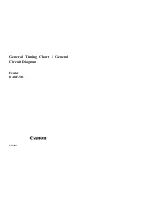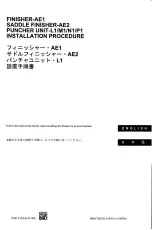
5-30
Phaser 380 Color Printer
5
Theory of Operation
Skip, scan and scale.
Electronic compensation is used to ensure that the left and
right of a wide-format image are correctly align together. A “skip” adjustment s
positions the left-half of an image horizontally (by slightly altering the position
of the printhead left or right) to interlace with the stitch of the right half. A
“scan” adjustment positions the left-half of an image vertically (by slightly
altering the moment of the printhead begins printing on the drum) to vertically
align with the stitch of the right half. A “scale” adjustment compensates for
variability in the X-axis drive system to ensure that the slight lateral motion used
to create the left-half of the image is identical to the motion used to create the
right-half of the image.
Transfixing, stripping and exiting
When ink deposition is about 95% complete, the process motor is activated to
bring the sheet of paper through the paper pre-heater and to the transfix
position. The paper preheater heats the paper to improve ink transfer. The
leading edge of the sheet of paper trips the paper preheater exit sensor as it
passes out of the paper preheater.
As the leading edge of the sheet of paper trips the paper preheater exit sensor,
the process of the transfix roller (which rotates freely) being lowered to its
transfix position begins. The process motor rotates clockwise, rotating the
process drive compound gear counterclockwise. Fourteen flags on the
circumference of the gear represent the fourteen teeth on the small gear, on the
back of the compound gear. When the teeth of the small gear are in the proper
position, as detected by the compound gear position sensor, the transfix cam
solenoid (located on I/O board 3), energizes to release the spring-loaded transfix
cam on the right end of the transfix roller shaft. This allows the transfix roller
gear (which up to this point in time had missing teeth “disengaged” to the
14-tooth gear of the process drive compound gear), to rotate slightly and engage
the small gear of the compound gear. During this time, the drum positions the
deadband to coincide with the arrival of the leading edge of the sheet of paper
(which is moving at the same rate as the drum). The drum and the media are
momentarily stopped as the transfix roller is lowered into contact with the
media and drum.
The rotating transfix gear rotates the transfix roller shaft about one-half
revolution. The transfix roller, which is eccentrically mounted on the transfix
roller shaft, moves into contact with the paper (5 mm behind the leading edge)
and then stops. This compresses the leading edge of the paper between the
transfix roller and the beginning of the image on the drum. The drum rotates
and begins to pull the sheet of paper between them. The transfix roller shaft
rotates slightly more so a protrusion on the transfix roller cam causes the
stripper fingers to momentarily drop down onto the deadband of the drum and
catch the leading edge of the sheet of paper and direct the paper to the exit
rollers. The transfix roller shaft rotates slightly more to clear the protrusion on
the transfix roller cam and raise the stripper fingers so they no longer contact the
drum. At this point, the transfix roller shaft rotates slightly so a lobe on the
transfix roller cam pushes the exit roller gear train into contact with the ring gear
on the right end of the drum. As the drum rotates, the exit rollers now rotate.
Summary of Contents for PHASER 380
Page 92: ......
Page 318: ......
Page 328: ......
Page 334: ......
Page 346: ...C 4 Phaser 380 Color Printer C Wiring Diagrams Figure C 6 Wire dressing behind the printhead...
















































